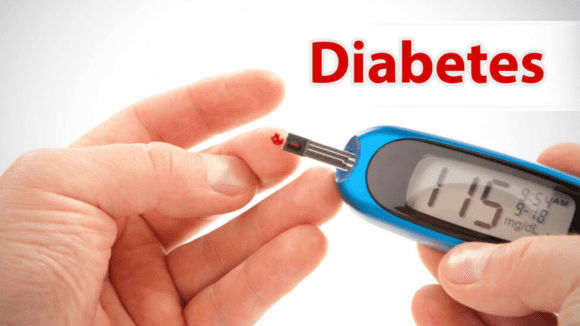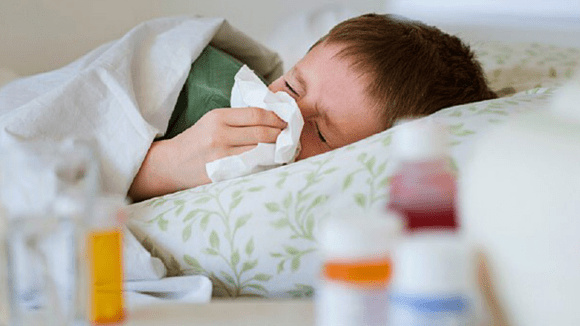
what to do if you have a fever and chills
Fever is not really a disease. It is a symptom, which is an expression of the body’s response to infection or inflammation. The normal human body temperature is 98.4 degrees Fahrenheit. If it is 99 even 99.9 it is not fever. It does not need to be tested. Almost all viral fevers go away within seven days. If more than seven days, typhoid and typhus or rickettsia are considered in our country.
Read more : what increases the risk for breast cancer
If it lasts more than three weeks, it is considered malaria, black fever. If it is more than that and the clue is not clear by now, it is pyrexia of unknown origin (PUO). Symptoms of most viral fevers include body aches, body aches, discomfort in work and/or sneezing, runny nose, and loss of appetite. At first high fever, headache, red eyes and face (especially in children) are symptoms of viral fever.
If there is cough, inflammation of upper airway, chest pain with cough, chest congestion, it is considered as pneumonia or pneumonia. If there is an abscess there may be fever but if it is high then it is due to other cause or abscess of liver kidney or heart (internal organ).
- Types of fever
If the fever is at the same level every day or does not vary by more than one degree (1 degree Celsius or 1.5 degrees Fahrenheit) in 24 hours, it is continued fever; All viral fevers are like this. Typhoid also continues fever. If the fever fluctuates less than two degrees and does not return to normal, it is remittent. And if it rises again after coming down to normal (base line) it is intermittent.
Malaria Intermittent Fever in our country; Malaria is not typically intermittent after two weeks. It can be intermittent even if the pus accumulates anywhere in the body. A fever with chills followed by shivering is considered to be a urinary tract or biliary tract infection. Malaria also causes high fever, with sweating.
Sore throat at the beginning of fever, red tonsils in the throat, it is pharyngitis or tonsillitis. Another early clue is a rash. If there is a rash on the first day of fever, it is chicken pox. In this case, there will be grains of different stages in the same place. Usually scarlet fever rash appears on the second day; It occurs with pharyngitis/tonsillitis due to streptococcus. On the third day of fever the rash appears in small pox.
Measles appear on the fourth day. In this case, the eyes become red before the rash, runny nose, Koplik spots appear in the oral cavity. On the 5th day, a rash that disappears almost completely is found in typhus.
Dengue rash appears on the sixth day. It is called convalescence rash because it comes out as soon as the fever subsides. Some fevers have characteristic features. Dengue fever is accompanied by rash and bleeding. Chikungunya causes a lot of pain along with the rash. Corona fever is accompanied by sore throat, then cough and finally difficulty in breathing.
- Tests to diagnose fever
Even if you don’t do anything for the first four days. Symptoms come in between. Especially viral fevers are understood. Fever also subsides and symptoms subside. At this time NS1 antigen I CBC (TC DC PC ESR) can be done for dengue. Since the liver is the largest organ, the shock eats first, so SGOT/SGPT can be done. If the fever does not go away in seven days, triple antigen and blood culture should be done.
Malaria test can be done anytime. Apart from this, tests can be done by looking at the symptoms, such as chest X-ray if there is difficulty in breathing and cough, urine routine and culture if there are urinary symptoms. After more than three weeks, some more tests, especially TB tests, should be done.
- Treatment
Paracetamol is the only medicine for fever, body aches, muscle discomfort.
Depending on the condition, it can be eaten up to 4 times a day. If the fever is more than 103 degrees, sponge with cold water (not ice), drink more water, take a bath. Saline injection may be given if necessary. But it must follow the doctor’s advice. Antibiotics are usually not needed.
- Dengue
Seasonal disease is more common at the beginning or end of monsoon. In our country it is more common from July. Most are in September-October. Up to 20% of dengue patients develop severe or fatal disease. However, dengue can be fatal at any time; Treatment may require intensive care.
- What to do
At this time, if there is a fever, i.e. body pain, joint or bone pain, headache especially pain behind the eyes, watery stomach and white blood cells or platelets decrease in the blood, dengue should be confirmed by examination.
- Bad dengue (symptoms of bad dengue):
If there is bleeding (especially mucosal bleeding), if the patient complains of abdominal pain or if the abdomen feels tight or cramping, if the liver is enlarged, if there is persistent vomiting, if the hematocrit is rapidly increasing or if the platelets are low, if there is fluid in the lungs, if there is difficulty breathing, the patient should If restless or increased restlessness. If these symptoms appear, you must go to the hospital and start treatment according to the advice of a specialist doctor.
- Deadly dengue:
Dengue is now called leaking disease. Because in this disease the blood vessels leak water, protein, salt out of the blood vessel. Excessive blood vessel leakage can cause a rapid drop in blood pressure (dengue shock), kidney failure, elevated liver enzymes, black stools, incoherent behavior, restlessness or convulsions. If these symptoms appear, urgent action should be taken. It may even require ICU treatment.
- Stages of dengue
Dengue has three stages (phases). Febrile, afebrile remission or critical phase and healing or convalescent phase. Dengue fever is characterized by bone pain more than the joints (break bone disease), pain behind the eyes (sore when turning the eyes). The febrile phase is called the critical (6th, 7th and 8th days from onset) period as the danger may increase as the fever recovers.
Dengue is described in three ways. Dengue fever, dengue hemorrhagic fever (DHF) and dengue shock syndrome. Now DH F is higher than before; Because the second time, dengue hemorrhagic fever (DHF) occurs.
Once dengue is not dengue within a year. The chance of the latter occurring is 0.5 percent. Bleeding is not hemorrhaging. Many people have recurrent periods (bleeding) during dengue fever. It happens even if platelets are normal; But it is not hemorrhagic dengue. Dengue hemorrhagic fever grade-3 and grade-4 together are called dengue shock syndrome. It mainly depends on blood pressure and pulse. For example, if a pressure pulse is not recorded, it is shock. Dengue fever, grade-1 DH F can be treated at home. Others have to go to the hospital.
- Resistance
Since it is a mosquito-borne disease, mosquitoes must be prevented. Water should not be allowed to accumulate in containers (jalkandas), construction house gutters, discarded tires, open coconuts, soft water cans, etc. for more than 5 days. Then the mosquito larvae will spread in the container. All possible measures should be adopted to kill mosquitoes in the house. To kill the Aedes mosquito in the house, effective spraying should be done in the container, under the table, in the fold of the curtain, in the waiting room. Remember, even though the dengue vaccine was discovered, widespread use did not begin.
- Finally
This seasonal fever known as dengue during the rainy season is now becoming more widespread. Most occur in September-October. If there is any fever at this time, it is better to start treating it as dengue. TCDC SGPT, dengue NS-1 antigen test can be done if possible (none is essential) if fever persists for 3-4 days. Patients do not need to be given any medication other than paracetamol.
Moderate water is the most effective treatment. Drinking water in moderation keeps blood pressure and urine in check; Especially the pulse pressure (subtraction of the upper and lower pressure is the pulse pressure) should be kept above 20 at all times. 3-4 liters of water for adults; Children should drink 50-100 ml/kg of water. Daily urine output should also be monitored. Be more careful during critical periods.
Water will be less at this time, because the blood vessels are leaking. And if you give more water, it will accumulate in the stomach and lungs. Excess water in children can cause swelling of the brain (cerebral edema). Children, pregnant mothers, the elderly, those with one or more other risk factors (co-morbidities) should be admitted to hospital and treated. If the fever goes down, you should be careful for three consecutive days (6-7-8) (critical period). If you don’t get bitten by mosquitoes, you won’t get fever. Mosquitoes should be prevented, full sleeves should be worn. Platelets are ineffective in treating dengue. It can be given if the number is below ten thousand. Severe bleeding but blood should be given.
Author: Medicine and Diabetes Specialist, Bardem Hospital, Dhaka.
| tag : what to do if you have a fever and chills,what to do if you have a fever and chills, what to do if you have a fever,what to do if you have a fever while pregnant,what to do if you have a fever when pregnant,what to do if you have a fever during pregnancy,what to do if you have a fever and chills,what to do if you have a fever in pregnancy,what to do if you have a fever of 103,what to do if you have a fever and headache,what to do if you have a fever of 101,what to do if you have a fever and sore throat,what to do if you have a fever and chills,what to do if you have a fever,what to do if you have a fever while pregnant,what to do if you have a fever when pregnant,what to do if you have a fever during pregnancy,what to do if you have a fever and chills,what to do if you have a fever in pregnancy,what to do if you have a fever of 103,what to do if you have a fever and headache,what to do if you have a fever of 101,what to do if you have a fever and sore throat,what to do if you have a fever and chills, |












